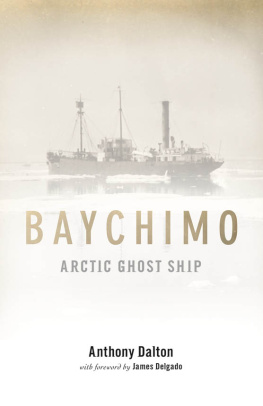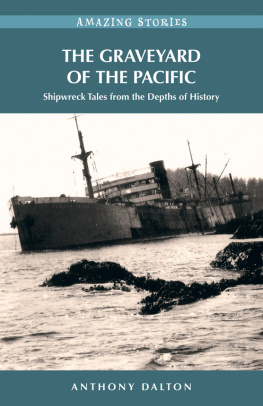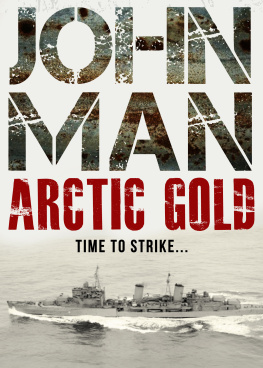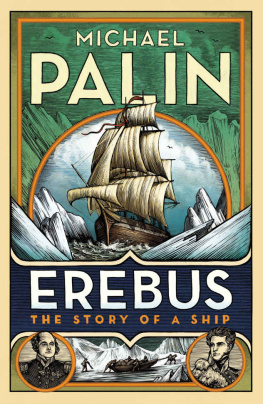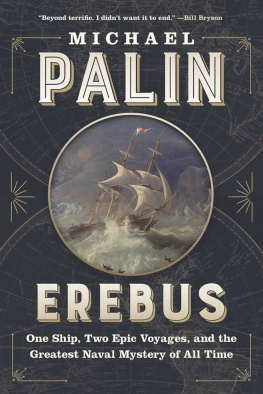Copyright 2006 Anthony Dalton
All rights reserved. No part of this publication may be reproduced, stored in a retrieval system or transmitted in any form or by any meanselectronic, mechanical, audio recording or otherwisewithout the written permission of the publisher or a photocopying licence from Access Copyright, Toronto, Canada.
Originally published by Heritage House Publishing Co. Ltd. in 2006 in paperback with
ISBN 978-1-894974-14-1.
This electronic edition was released in 2011.
e-pub ISBN 978-1-926936-77-2
Cataloguing data available from Library and Archives Canada
Edited by Jonathan Dore
Cover design by Roberta Batchelor/R-house
Cover photo courtesy of Vancouver Maritime Museum
Heritage House acknowledges the financial support for its publishing program from the Government of Canada through the Canada Book Fund (CBF), Canada Council for the Arts and the province of British Columbia through the British Columbia Arts Council and the Book Publishing Tax Credit.

www.heritagehouse.ca
Foreword
The most common thread in human history is our interaction with the sea. The saga of exploration, settlement, trade, science, war and recreation is replete with stories of seafaring and ships. No matter where you are on the globe, tales of the sea come to the forefront, be they incredible voyages, fabled ships and their crews, tremendous battles, tragic shipwrecks or tales of the strange and mysterious.
The Arctic, known to mariners as a land that devours ships, was described by Victorians as a place of weird and tragic shores. Even a casual look into its maritime history reveals numerous tales of endurance, bravery, heroism, cowardice, survival and doom.
The search for an oceanic passage through the Arctic was a three-century quest that left many tales of expeditions threading their way through icy mazes or locked for months in the grip of the frozen sea in the darkness of an Arctic winter. The quest for the Northwest Passage left a trail of broken and lost ships and the bones of hundreds of men to litter the Arctic. For over a century, stories have been told of Perry, Ross and Franklin, of the wrecks of Fury and Victory , and the disappearance of Erebus and Terror . The sagas of those who made it, and succeeded, have survived along with their vessels. The exploits of Amundsen and Larsen, in their ships Gja and St. Roch , have also made it into print.
The legacy of the Arctic is more than one of exploration, however. There are also the stories of those who have been there for thousands of years, traversing and harvesting these seas and surviving in an unforgiving land. Of the whalers, trappers, traders, miners, scientists and police who journeyed north, settling for a whileor for their entire lives.
Of all those tales, one of the most mysterious, often repeated and, until now, clouded with inaccuracy is the story of the fabled ghost ship of the Beaufort Sea, Baychimo . Its story is known to all who journey north and has joined other great tales of the sea, like that of Mary Celeste . Baychimos fame rests on her decades of being occasionally sighted as she drifted with the ice long after she was abandoned, apparently at the brink of disaster, in 1931.
Baychimo was not the first ship abandoned to the ice, nor the only one to drift, unscathed, with the floes. In August 1854, a British naval expedition under the command of Captain Sir Edward Belcher, stuck in the ice while searching for the missing Franklin Expedition, abandoned most of its ships and struck out for home. One of those ships, HMS Resolute , reappeared in the North Atlantic a year later, afloat and with the tables still set. Unlike Resolute , however, Baychimo never returned, always drifting away into the fog, into the ice, into a storm, after brief encounters. To this day no one knows exactly where she rests, on the bottom or frozen into a thick mass of ice. Humans may never again board her decks, even in a submersible or in a dive suit. Unlike other lost ships, Baychimo may be forever lost.
However, Baychimo will not be forgotten, or relegated to a simple footnote. In this book, Anthony Dalton has brought life to the ghost, fleshed out the bare bones of fireside tales and legend and dived deep into the archives. He has masterfully brought to his readers the story of the Hudsons Bay Companys Arctic endeavours, the stories of Baychimos many voyages, her crew and the long and strange odyssey of an abandoned ship that refused to die.
It is a story worth telling, and it is a story worth reading. Come, and dive into history as you turn these pages and travel back in time to the frozen vast seas at the top of the world.
James Delgado
Director of Maritime Heritage, Office of National Marine Sanctuaries
National Oceanic & Atmospheric Administration
Chapter 1
An Arctic Ghost Ship
The wind, which has been blowing steadily for days and is laden with particles of ice, shifts suddenly, arcing across the compass from NE to NW . It gusts hard, blowing stronger with every passing minute: a harsh, malevolent wind. A polar bear and her cub lower their heads, screw their eyes to slits and turn into that same vicious wind. With the sow in the lead and the cub close to her right flank, the yellowish-white Arctic bears move steadily across the wind-formed sastrugi, heading away from the shoreaway from the imminent danger.
Where a short time before there had been an impression of silenceexcept for the winds mournful songthere now come tormented sounds of grinding and screeching as great floes of multi-year ice crash into each other, raft over each other, rear up and pile upon each other: building blocks of solid ice reaching 25 metres (80 feet) in the air. Thunderous roars echo across the frozen sea and reverberate across the land, giving a cacophonous voice to jagged mountains of blue and white. Natural violence takes on a new meaning as the polar ice pack, responding urgently to the growing storms restless energy, slams into the low-lying, snow-covered north Alaskan shoreline.
Far out on the Arctic Ocean, moaning softly at the early summer storm while sitting almost upright in the middle of a giant ice floe, a shipmore like an elongated icebergdrifts slowly and steadily toward that same distant Alaskan shore. Every part of her, from her tall slim funnel to her deck, from forepeak to stern, is coated with a solid layer of ice, around a metre (three to four feet) thick in places. Atop her foremast the crows nest has grown to twice its normal size. The foremast, and its twin aft, stand rigid with their supporting rigging, unable to flex under the glacial wrapping. Slowly, almost imperceptibly, the floe revolves, responding to the wind and current, turning the ghostly ship in a lazy pirouette, displaying her once-proud lines from all angles. No sounds, other than the screeching of ice pinching her hull, emanate from her. No lights show aboard. No warmth radiates from within the hull. No sailors walk hesitantly across her icy wooden decks. No master mariner stands on the bridge to guide her. No calloused hands caress the oaken wheel. The ship is deserted: a plaything for the Arctic winds, ocean currents and the ever-present ice.
As the giant ice floe drives up against more ice crowding the shorelinethe floes pushing and shoving, jostling each other in their apparent haste to cover the last few kilometres to landit grinds its rough edges smooth against others of its kind, as its gentle rotation comes to a temporary stop. The ghostly ship trembles for a while as the vibrations from all around settle down. For a few days the floe and the captive ship in its centre stay put, held there by the northwest wind.

